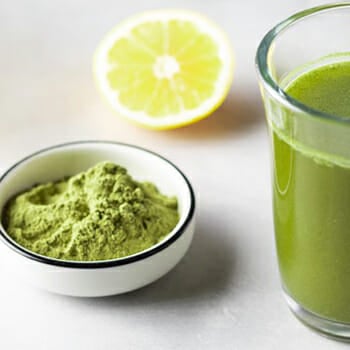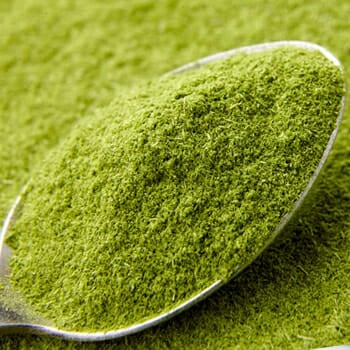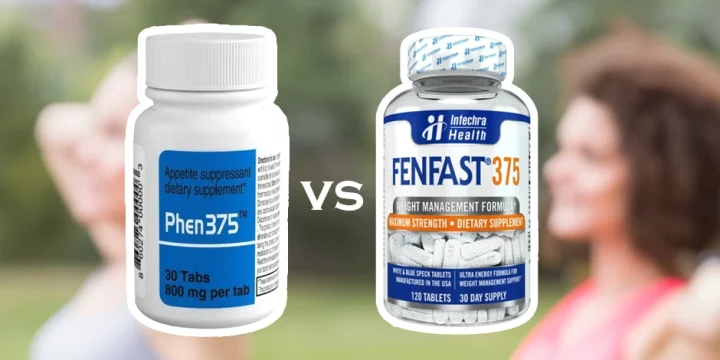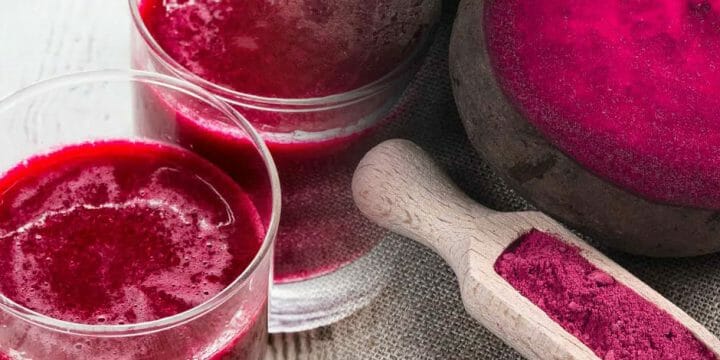As a personal trainer, I've seen wheatgrass gain popularity over the last 20 years, and there's ongoing debate about the best form to consume it in.
The most common forms my clients ask about are wheatgrass powder and wheatgrass juice powder.
To provide a clear, unbiased comparison for my clients and readers, I've dedicated many hours to researching both the whole powder and juice powder forms, focusing on their safety and health benefits.
Quick Summary
- Wheatgrass powder is rich in fiber, whereas wheatgrass juice powder boasts greater levels of vitamins, minerals, and antioxidants.
- To optimize health benefits, choose between wheatgrass powder for fiber content and wheatgrass juice powder for higher concentrations of vitamins and antioxidants.
- According to the National Institute of Health, most adults only receive about a quarter of their Recommended Dietary Allowance (RDA) for fiber, making wheatgrass powder a beneficial dietary addition.
- As a personal trainer, I find both forms of wheatgrass beneficial, with the choice depending on individual dietary needs and health objectives.
Which Is Better, Wheatgrass Powder Or Wheatgrass Juice Powder?

Wheatgrass powder and wheatgrass juice powder offer outstanding health benefits, but neither is better than the other.
Wheatgrass is the young grass or the newly sprouted leaves of the wheat plant, Triticum aestivum.
Although it’s sold in many forms, the juice powder and whole powder forms are often those subject to comparison.
The Differences
Fiber
It appears that the main argument around their differences revolves around the presence and absence of fiber.
Fiber, the part of plants that the human digestive tract can’t digest, is classified as soluble and insoluble. Soluble means it can be dissolved in water, while insoluble is the opposite.
Cellulose
Cellulose, the main constituent of plant cells, is an insoluble substance. When eaten, cellulose goes through the gastrointestinal tract relatively intact.
Nutritional Content
When it comes to nutritional content, only wheatgrass powders have more fiber; juice powders don’t have them at all.
Whole powders contain both the insoluble fiber needed to maintain a healthy gut and the soluble fiber found in many fruits and berries.
However, juice powders will typically have more of the following vitamins and minerals:
- Vitamin A
- Vitamin E
- 11 times more calcium
- Twice the iron
- 4 times more chlorophyll
- Up to 42 times more superoxide dismutase
From my experience as a personal trainer, I've found that even though juice powder has higher nutrient concentrations, this doesn't mean wheatgrass powder isn't beneficial.
Several studies support the benefits of wheatgrass, including one research from ResearchGate demonstrating that wheatgrass powder effectively decreased oxidative stress and elevated total antioxidant status [1].
What Is Wheatgrass Powder?

Wheatgrass powder is made by grinding the whole plant, including all edible parts, into fine particles and then drying it.
It's available in powder form, tablets, or capsules.
Packed with nutrients, it's great in smoothies or for juicing. Plus, it's rich in both soluble and insoluble fiber, making it a top pick for hitting your daily fiber needs.
According to the National Institute of Health (NIH), most adults only get about a quarter of their fiber Recommended Dietary Allowance (RDA) [2]. Therefore, tossing some wheatgrass powder into your diet is a smart move.
What Is Wheatgrass Juice Powder?
As a personal trainer, I often recommend wheatgrass juice powder to my clients.
It's made just like regular wheatgrass powder, but with a key difference: it's strained to remove the fibrous and pulpy parts, leaving only the juice, which is then dried into a powder.
This process boosts the nutrient content, making it more concentrated than whole powder, though it does lack fiber.
Just a teaspoon of this juice powder is as potent as 6 to 10 shots of fresh wheatgrass juice or an entire tray.
While it tastes slightly less grassy than whole powder, it's still quite strong. For a smoother taste, I suggest mixing it with robust juices like orange or pineapple.
Benefits Of Wheatgrass

Although wheatgrass is associated with several health benefits, research on its effects on humans still lacks, with many studies focused only on its specific compounds.
However, this isn’t to say that wheatgrass is entirely ineffective.
According to the scientific evidence, here are some of the benefits linked to wheatgrass intake:
-
Immune system booster
Despite its grassy smell and taste, research says that wheatgrass can strengthen the immune system, prevent disease, and detoxify the body.
That’s why wheatgrass advocates also take it to fight a number of common health conditions, including coughs, colds, fevers, digestive problems, and skin conditions.
-
Potential treatment for serious illnesses
Test-tube studies have found that wheatgrass may help kill cancer cells and prevent the development of cancer. In fact, one human study found that it may reduce chemotherapy complications.
Wheatgrass can also potentially treat AIDS.
-
It can provide excellent nutritional value
Wheatgrass contains many vitamins and minerals, such as vitamins A, C, E, magnesium, iron, and amino acids.
-
Improves blood sugar and cholesterol levels
Some animal studies suggest that wheatgrass products may assist in managing blood sugar levels and may even help lower blood cholesterol levels.
However, more human studies are needed to confirm if the same applies to people.
-
Helps with weight loss
Animal studies have found that the thylakoids in wheatgrass whole powders promote satiety and weight loss. You can also add them to green smoothies to promote healthy weight management.
-
Excellent source of amino acids and chlorophyll
Wheatgrass powder has 17 amino acids, 8 of which are essential amino acids, meaning the body can’t produce them.
It also has chlorophyll, a green plant pigment that offers many benefits to your physical health, like reducing inflammation.
“Wheatgrass is one of the highest sources of chlorophyll due to its rich deep green color. Chlorophyll is extremely cleansing, detoxifying, and energizing.”
- Kristen Johnson Brogan, Registered Dietitian
Chlorophyll also makes the blood oxygen-rich, and when the blood has more oxygen, it carries more nutrients to all the cells in your body.
-
Rich source of antioxidants
Wheatgrass contains several antioxidants such as vitamins C, E, and glutathione, which effectively reduce oxidative stress.
-
May reduce inflammation
According to one study, wheatgrass may help treat ulcerative colitis, an inflammatory bowel disease that causes inflammation and ulcers in the digestive tract.
-
Easy to incorporate into your diet
Aside from its many health benefits, wheatgrass can be consumed in many different forms.
Wheatgrass products come in juice, powder, tablet, and capsule forms, so you can easily add them to your diet.
Innovative Recipes Incorporating Wheatgrass
- Wheatgrass Citrus Smoothie Bowl:
- Blend together a frozen banana, a handful of spinach, a cup of coconut water, and a teaspoon of wheatgrass powder until smooth.
- Pour the vibrant green mixture into a bowl and top it with sliced citrus fruits like oranges and grapefruits, along with chia seeds and a sprinkle of granola for added crunch.
- Wheatgrass Mint Lemonade:
- In a pitcher, mix water, fresh lemon juice, a few mint leaves, and a teaspoon of wheatgrass powder.
- Sweeten to taste with agave syrup or honey, and let it chill in the fridge.
- Serve over ice, garnished with lemon slices and additional mint leaves for a refreshing and detoxifying drink.
- Wheatgrass Avocado Toast:
- Mash ripe avocado and spread it on whole-grain toast.
- Sprinkle wheatgrass powder on top for a nutritional boost.
- Add cherry tomatoes, radish slices, and a pinch of sea salt for a vibrant and nutrient-rich breakfast or snack.
- Wheatgrass Popsicles:
- Mix coconut water, a splash of pineapple juice, and wheatgrass powder.
- Pour the mixture into popsicle molds and add small chunks of fresh fruits like kiwi and berries.
- Freeze and enjoy a cool, nutritious treat on a hot day.
These recipes provide a creative and tasty way to incorporate wheatgrass powder, harnessing its nutritional benefits in diverse and enjoyable culinary experiences. Adjust ingredient quantities to suit personal preferences.
FAQs
Does Wheatgrass Juice Powder Work?
Yes, wheatgrass juice powder works. Wheatgrass and its constituents have been linked to a variety of health advantages, including weight loss, reduced inflammation, lower cholesterol, and improved blood sugar management.
How Long Does It Take for Wheatgrass Powder to Work?
It takes about 10 weeks to see the effectiveness of wheatgrass powder.
How Many Spoons of Wheatgrass Powder Should I Take a Day?
You should take one teaspoon of wheatgrass powder a day. After consuming wheatgrass, drink an 8-ounce cup of water to lower your chance of negative effects.
Reference:
- https://www.researchgate.net/publication/5864022
- https://www.ncbi.nlm.nih.gov/pmc/articles/PMC9298262/
About The Author
You May Also Like






